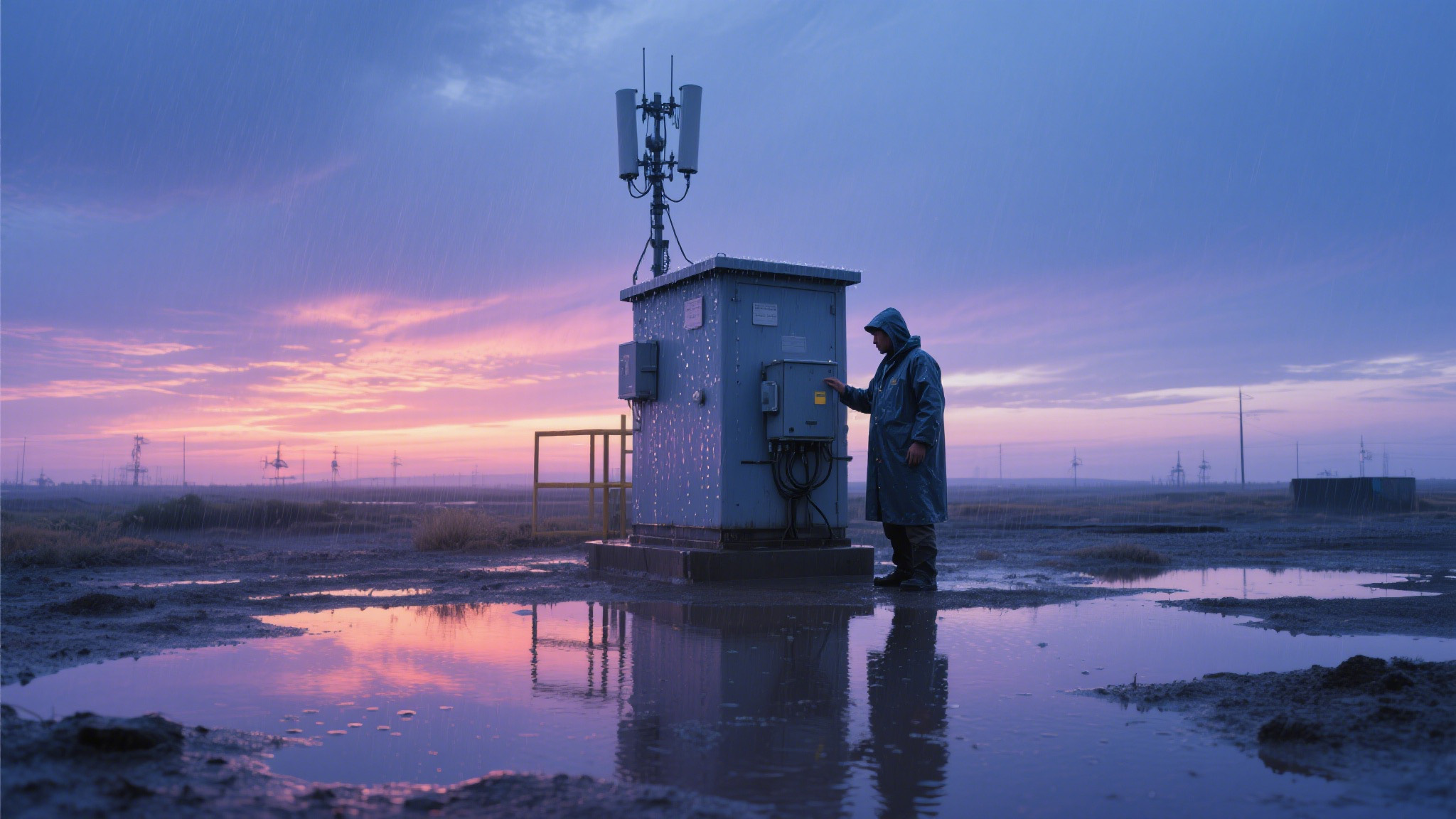A case of wireless microwave transmission in a certain oilfield in the west
I. Project Background
A certain oilfield in the west has an extensive area, with oil wells distributed in the complex terrain of the Gobi desert and mountainous regions. The traditional wired transmission method faces numerous challenges. The cost of laying cables is high, and the construction in complex terrain is extremely difficult, and maintenance is also very inconvenient. Moreover, some remote areas are difficult to connect to the conventional communication network, which seriously affects the production, operation and management efficiency of the oilfield. To solve the problem of data transmission and improve the digitalization level of the oilfield, this oilfield has decided to introduce wireless microwave transmission technology.

II. Demand Analysis
Real-time data transmission: It is necessary to transmit the production data of oil wells in real time, such as pressure, temperature, and flow rate, in order to monitor the production status promptly and ensure production safety and efficiency.
High-definition video surveillance: Achieve high-definition video monitoring of key areas such as oil wells, oil storage areas, and operation zones, for safety prevention and production supervision, to ensure the safety of oilfield facilities, and promptly detect and handle abnormal situations.
Stable and reliable: The transmission system must be able to operate stably in harsh natural environments, resisting extreme weather conditions such as sandstorms, high temperatures, and low temperatures, and ensuring the continuity and accuracy of data transmission.
Scalability: Considering the future development of the oilfield, the transmission system must have excellent scalability, enabling it to easily connect new oil wells and equipment and meeting the continuously increasing data transmission demands.
III. Scheme Design
Equipment selection: We choose microwave antennas with high gain and low noise to enhance the signal transmission capacity and reduce signal attenuation. Combined with high-performance microwave transceivers, which support various modulation methods, they can provide stable and high-speed data transmission rates, meeting the requirements for large data volume transmission in the oilfield.
Network architecture: A hybrid network architecture combining point-to-point and point-to-multipoint connections is adopted. In oil wells that are relatively close and have high data transmission demands, point-to-point links are established to ensure rapid and stable data transmission. For small oil well groups that are more scattered, a point-to-multipoint approach is used, where a central node receives and forwards data from multiple oil wells, effectively enhancing the network coverage and transmission efficiency.
Frequency planning: Based on the electromagnetic environment of the oilfield area, reasonably plan the microwave transmission frequency, avoiding the interference frequency bands of other communication systems, and ensuring the quality and stability of signal transmission. At the same time, adopt advanced anti-interference technologies, such as frequency reuse and interference cancellation, to further enhance the anti-interference capability of the system.
Redundant Design: To ensure the reliability of transmission, redundant designs are adopted for key nodes and links. Backup links and equipment are set up. In the event of a failure of the main link or equipment, the system can automatically switch to the backup link to ensure uninterrupted data transmission and minimize the impact on production.
IV. Implementation Process
Site survey: The technical team conducted a detailed on-site investigation of the oilfield area, taking into account factors such as terrain, landform, and the distribution of oil wells, to determine the optimal location for the microwave stations. Through precise measurement and analysis, they ensured good line of sight between the stations and reduced signal obstructions and interference.
Equipment Installation and Commissioning: At the selected site, install the equipment according to the design plan. The installation process strictly follows relevant standards and specifications to ensure the equipment is firmly installed and the wiring is correct. After installation, conduct detailed commissioning of the equipment to optimize the parameters and ensure the signal transmission quality reaches the best state.
Network Testing and Optimization: After the equipment installation and debugging are completed, a comprehensive test is conducted on the entire wireless microwave transmission network. The test contents include key indicators such as data transmission rate, packet loss rate, and latency. Based on the test results, the network is optimized specifically to adjust the equipment location and parameters, improve network performance, and make it meet the actual needs of the oilfield.

V. Application Results
Efficient Data Transmission: Real-time and accurate transmission of oil well production data has been achieved, significantly increasing the data transmission rate and meeting the requirements of automated oilfield production. Production managers can obtain production data in real time and make timely decisions and schedules, thereby improving production efficiency and management level.
High-definition video surveillance: Through the high-definition video surveillance system, one can clearly observe the actual situation at the oil well site, effectively enhancing the security prevention capabilities. It promptly detected and handled multiple safety hazards and abnormal incidents, ensuring the safe operation of the oilfield facilities.
Stable and reliable operation: After undergoing long-term operation tests, the wireless microwave transmission system still maintains stability and reliability in harsh natural environments. The system failure rate has significantly decreased, and maintenance costs have been greatly reduced, providing strong support for the stable production of the oilfield.
Good scalability: As the oilfield expands, new oil wells and equipment are continuously connected. The wireless microwave transmission system demonstrates excellent scalability. It easily provides data transmission support for the newly added equipment, meeting the continuous development needs of the oilfield.
VI. Summary of Experience
Early planning is of vital importance: detailed site investigation and reasonable network planning form the foundation of the project's success. Before the project is implemented, it is necessary to fully understand the actual situation of the oilfield and comprehensively consider various factors to formulate a scientific and reasonable plan.
Equipment quality is crucial: Selecting high-quality equipment is the key to ensuring the stable operation of the system. High-quality microwave equipment has better anti-interference capabilities and transmission performance, which can effectively reduce the occurrence of faults and improve the reliability of the system.
Technical team support is indispensable: During the project implementation process, the professional capabilities and experience of the technical team play a crucial role. From equipment installation and commissioning to network optimization, all these tasks require technicians to possess solid professional knowledge and rich practical experience to ensure the smooth progress of the project.
Continuous optimization and maintenance: After the wireless microwave transmission system is put into use, it needs to be continuously optimized and maintained. Regularly conduct inspections and evaluations of the system, promptly identify and solve potential problems, and continuously optimize the system performance to ensure its long-term stable operation.
By introducing wireless microwave transmission technology, this western oilfield successfully solved the problem of data transmission, improved the efficiency of production operation and management, laid a solid foundation for the digital and intelligent development of the oilfield, and provided a successful case that can be learned from for other similar oilfields.









